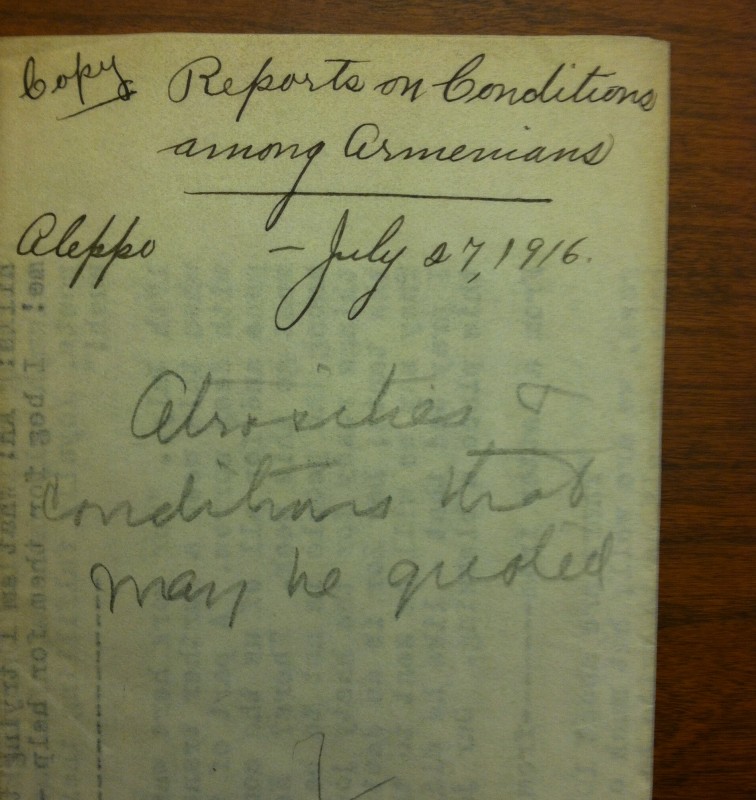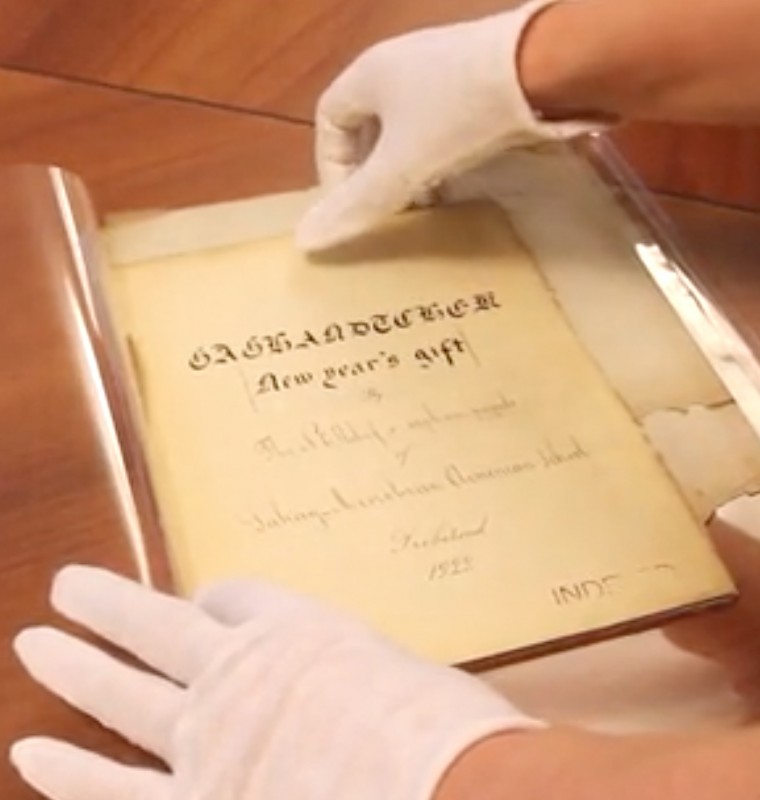Behind the Scenes at the Digital Museum
What goes on behind the scenes at the Near East Relief Historical Society?

A snowball fight at the orphanage complex at Alexandropol is recognizable by the converted army barracks in the background.
As I, your stalwart curator (Molly), arrived at the office this morning, I was mulling over a conversation that I had a few days ago. It started with a question that I hear a lot: “How does a digital museum work?” I hear it often enough that I decided to write a Dispatch about it.
A digital museum is not so different from a traditional museum. We use images to tell stories. Every Dispatch, every Facebook post, every digital Exhibit entry — everything begins with our collection of documents and photographs. It all starts in the archives.
The Near East Foundation’s archival collection is housed at the Rockefeller Archive Center in Tarrytown, NY, about 45 minutes by train from midtown Manhattan. When NEF was looking for a home for its collection in the late 2000s, the Archive Center was a natural choice. The Rockefeller Foundation was one of the first large institutions to donate to the American Committee for Armenian and Syrian Relief (later Near East Relief) in 1915.

Exterior of the Rockefeller Archive Center in Tarrytown, NY. Image courtesy of the Rockefeller Archive Center.
BURIED TREASURES
The NEF collection covers much of the organization’s history from 1915 through the 1980s. A small portion of the collection dates to the Near East Relief period from 1915 to 1930. The collection is still in the same condition that it was in when it was in file cabinets and boxes at NEF’s offices. This makes for some challenging research. Sometimes I will find an especially interesting letter or photograph. If I don’t make note of exactly where that item is, it can be very hard to find it again.

It also leads to some unexpected discoveries. For example, in the 1940s Barclay Acheson began work on a book about his long career with Near East Relief and NEF. He stashed some documents in a file with his manuscript. He had selected some of the earliest documents from Near East Relief’s history. That file ended up in a box of correspondence about NEF’s work in Albania in the 1930s. Last summer I stumbled on Acheson’s accordion file by chance.
Much to my surprise, it contained a folder of letters from 1915 and 1916: fragile photostats (a precursor to the modern photocopier) of communications from missionaries in the Ottoman Empire. The originals were smuggled out of Turkey. The American public learned about the Armenian Genocide when James L. Barton and his colleagues sent copies to friends in the press. The paper itself is so fragile that the letters have not yet been scanned. At left: A copy of a letter from 1916 with handwritten notations.

PRESERVATION AND RESEARCH
Nothing compares with the experience of interacting with actual historical documents and photographs. There is something so special about holding these materials in your hands. History truly does come alive when you carefully leaf through a handwritten memory book made by a group of orphans at Trebizond in the 1920s (at right).
I find most of my inspiration in our large binders of archival photos. Luckily, our photograph collection is in very good condition. We even have some of the original negatives. Many, but not all, of these images have been scanned by the archivists. Adding images to our digital Archive is an ongoing process that will take several years.
Our photos from the Near East Relief era vary dramatically in size and image quality, and most of them do not have any identifying information like dates or place names. That means plenty of research and a little bit of guesswork (as you may remember from the Museum Detectives series).
IN SEARCH OF STORIES
When you walk into a brick and mortar museum, what you see on the walls and pedestals is usually a small percentage of the museum’s collection. The rest is in storage. Most pieces rotate in and out of the galleries based on a set schedule.
In this way, a Digital Museum like this one is very similar to a “real” museum. We have so many documents and photographs that it is impossible to show them all at once. Being a curator means making choices in order to find the best way to tell a story.
We tell the stories of Near East Relief through the Exhibit, the Archive, and the Memorial, but most of all we tell our stories through Dispatches. Did something significant happen on this date in Near East Relief history? Have I discovered a new story about a person, place, or event? Have I found some images that tell a well-known story in a new way?
Our photographs make the Dispatches about life in the Orphan City very special.
Sometimes I start with an idea or a question (such as “where did the food in the orphanages come from?”) and find photographs to go with it. Other times, I am so taken with a single image that the Dispatch grows around it. And then there are the wonderful moments when a person generously entrusts NERHS with a family photograph, and I build a Dispatch in order to share that meaningful story.
In short, life behind the scenes at the Digital Museum is never dull. And the Museum is just one facet of the Near East Relief Historical Society’s educational work!
